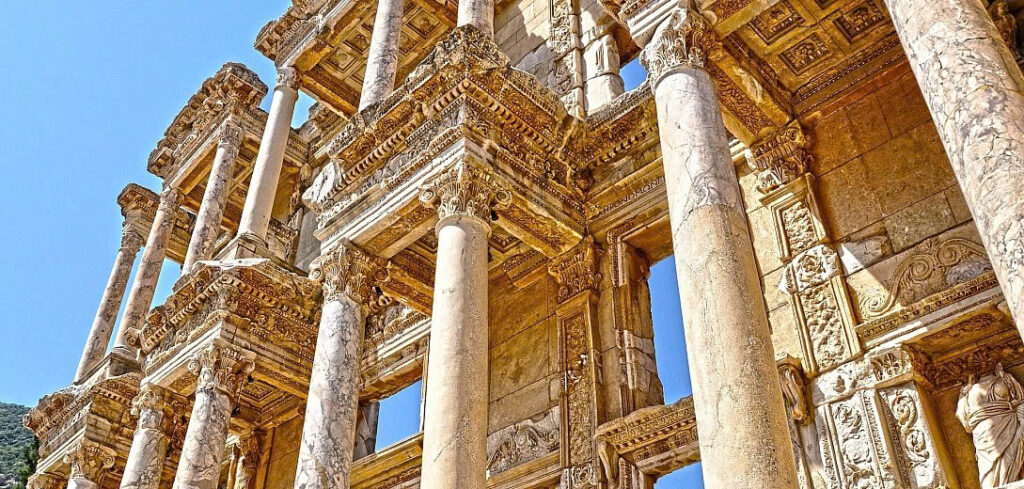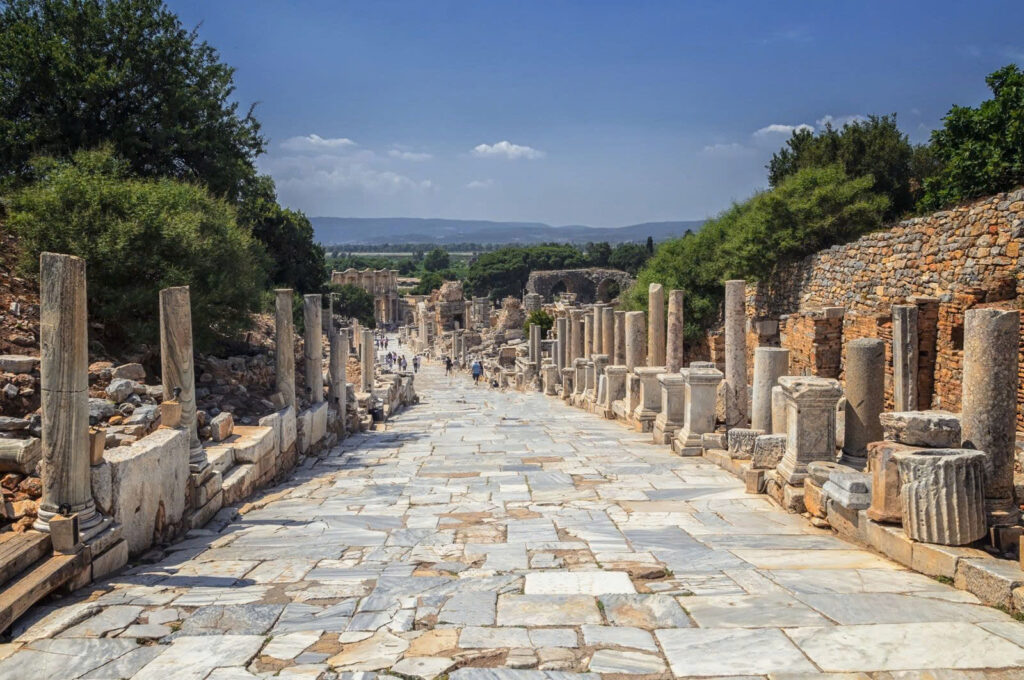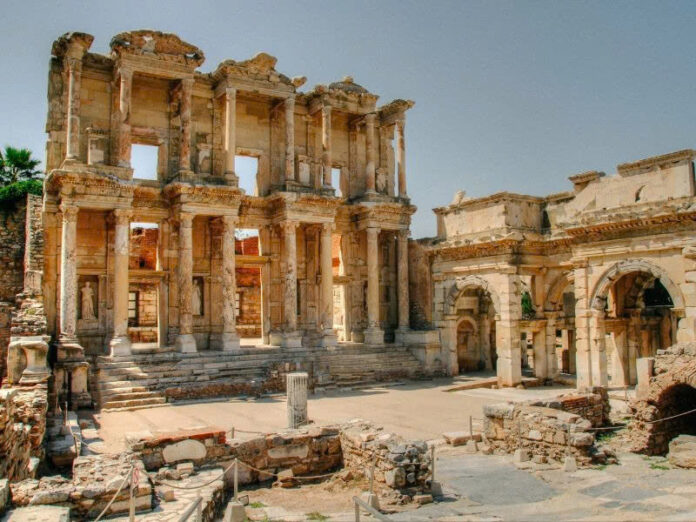In the rolling hills of modern-day Turkey lies a story written in marble and stone—a narrative of rise and fall, of divine worship and human ambition, of a city that once commanded the ancient world and continues to whisper its secrets to those who listen.
The Rise of a Trading Empire
From Greek Settlement to Roman Jewel
The tale begins in the shadowy depths of the 10th century BCE, when Greek colonists first glimpsed the fertile lands that would become their new home. They could hardly have imagined that their modest coastal settlement would grow into one of antiquity’s most powerful cities, a place where East met West in a symphony of commerce and culture.

Ephesus bloomed like a flower in the Mediterranean sun, its strategic location making it the natural meeting point for merchants, scholars, and dreamers from across the known world. Under Greek rule and later Roman dominion, the city transformed into a dazzling metropolis where fortunes were made, ideas were born, and civilizations converged.
The Sacred Heart of the City
Rising above the bustling streets and crowded marketplaces stood the Temple of Artemis, a structure so magnificent that ancient writers proclaimed it one of the Seven Wonders of the World. This wasn’t merely a building—it was the beating heart of Ephesus, a sacred space where the divine touched the earthly realm, drawing worshippers and pilgrims from the furthest reaches of the ancient world.
Architectural Marvels That Defied Time
The Library That Housed Eternity
Among the city’s greatest treasures was the Library of Celsus, a monument that served as both a shrine to knowledge and a tomb for the dead. Within its walls, thousands of scrolls contained the wisdom of ages, making Ephesus a beacon of learning that attracted scholars and intellectuals from across the empire. The library stood as proof that this was a city that valued not just wealth, but the treasures of the mind.
The Theater Where History Echoed

Perhaps no structure better captured the spirit of Ephesus than its Great Theater, a colossal amphitheater carved into the hillside that could hold 25,000 souls. Here, beneath the open sky, citizens gathered to witness dramatic performances, engage in heated political debates, and participate in the great conversations that shaped their world. The theater’s perfect acoustics, still functioning after two millennia, remind us of the ingenuity of ancient minds.
The Dawn of a New Faith
Apostolic Footsteps on Ancient Streets
The story of Ephesus took a dramatic turn when the Apostle Paul arrived in the city, bringing with him a message that would transform the world. The cosmopolitan nature of Ephesus—its openness to new ideas and its position as a cultural melting pot—made it the perfect launching pad for the spread of Christianity. Paul’s sermons echoed through the city’s streets, his words eventually becoming sacred scripture.
The Basilica of St. John, built over the apostle’s believed burial site, transformed Ephesus into a holy destination, ensuring that pilgrims would continue to walk its ancient paths long after its commercial glory had faded.
Video
The Great Decline
When Rivers Change Their Course

No empire lasts forever, and Ephesus learned this harsh truth in the centuries following its golden age. The very harbor that had made it wealthy began to fill with silt, strangling the lifeblood of trade. Earthquakes shook its foundations, barbarian invasions tested its defenses, and gradually, inexorably, the great city began its slow surrender to time and nature.
By the 3rd century CE, the once-mighty metropolis had begun its transformation from a living city into a memory, its streets slowly being reclaimed by grass and wild flowers.
A Phoenix in Stone
Modern Pilgrimage to Ancient Wisdom
Today, Ephesus lives again—not as a bustling city, but as one of the world’s most precious archaeological sites. Recognized by UNESCO as a World Heritage Site, its remarkably preserved ruins welcome hundreds of thousands of visitors each year, each one seeking to touch the stones that once witnessed the drama of ancient life.
Walking through Ephesus today is like stepping through a doorway in time. The marble streets still bear the marks of ancient cart wheels, the mosaics still gleam with their original colors, and the walls still echo with the voices of those who came before. Here, in this open-air museum, the past refuses to remain buried.
The Eternal Legacy

The story of Ephesus is ultimately the story of humanity itself—our endless drive to build, to create, to reach toward something greater than ourselves. In its ruins, we see reflected our own hopes and dreams, our triumphs and failures, our unquenchable thirst for beauty and meaning.
As visitors walk the same paths once trodden by emperors and apostles, merchants and pilgrims, they become part of an unbroken chain of human experience that stretches back over two millennia. Ephesus reminds us that while cities may crumble and empires may fall, the human spirit endures, leaving its mark on the world in ways both great and small.
In preserving Ephesus, we preserve not just ancient stones, but the very essence of what it means to be human—to dream, to build, to seek the divine, and to leave something beautiful for those who come after us.
